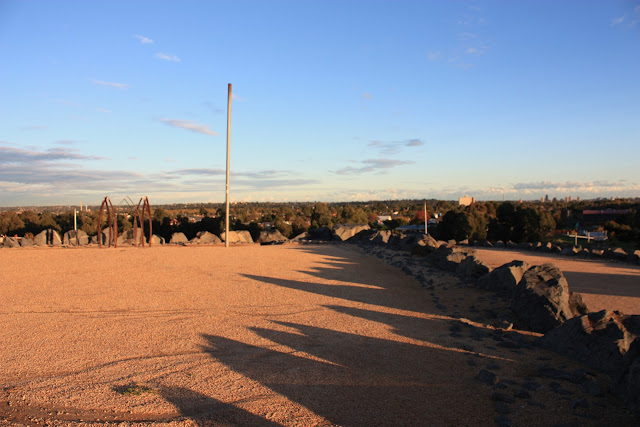This is a photo I took, on a lil bank, of Merri Creek and if u can see the train above the creek, through the trees - I take this train quite alot too and from school and the veiw of the creek is allways so nice :)
A brief before we get into it -
The Merri Creek flows about 60 km from the Dividing Range
through Melbourne’s northern suburbs to the Yarra River. The Merri Creek is an
environmental, heritage and recreation corridor which has significance from its
role as a continuous corridor as it does from the qualities of individual
reaches. The Creek and its immediate surrounds is host to some of the most threatened
ecosystems in Australia and has a unique role to play in the preservation of
threatened flora and fauna and the maintenance of vegetation communities that
in other places have almost been totally destroyed.
Revegetation works and parkland
development including path construction have created outstanding quality and landscape character – which plays an important role
in the park system of the metropolitan region.
Some info that I think is awesome and is something to think
about next time walking by the the creek next; A quote from the website of the
Merri Creek Management Committee, “ the Merri valley
contains many millions of years of history and secrets. Over 400 million years
ago the sea covering this area receded....from 0.8 to 4.6 to million years ago
volcanoes such as Hayes Hill (about 5km east of Donnybrook) and Mt Fraser (near
Beveridge) erupted, sending lava on an epic journey along the ancestral valleys
of the Merri and Darebin Creeks and into the valley of the Yarra River as far
as the CBD...Our modern day Merri
Creek was formed over many years, by incising through the lava surface.”
Merri Creek management Committee Incorporated (MCMC)
is an environmental coordination and management agency and this is their mission
statement, which I think is pretty cool and sums up well who and what they do -
MCMC respects and honours the spirit of the land and its peoples, indigenous plants and animals, and works with the community to preserve, restore and promote the Merri Creek, its catchment and neighbouring region as a vital living system
MCMC respects and honours the spirit of the land and its peoples, indigenous plants and animals, and works with the community to preserve, restore and promote the Merri Creek, its catchment and neighbouring region as a vital living system
This is a project which I found
interesting –
 |
| http://www.mcmc.org.au |
Nearly two decades of community advocacy
and planning preceded the initial development of Merri Park Wetland in
Northcote in 1999. The commitee worked with community and its partners to
strengthen the wetland’s water treatment and habitat values in subsequent
years, creating a ‘hotspot’ for wildlife along the Merri.
Lobbying during the 1970s and 80s overcame
a proposal for a high concrete flood protection barrier next to Merri Creek.
Instead, landscaped earthen levee banks and creek-side parklands were
established and planted. Community input influenced the design of the wetland.
Since 2000 over 16,000 plants have been planted.
Wetlands are productive ecosystems
providing habitat for native animals and plants, including rare and threatened species.
They assimilate and recycle nutrients and trap sediments. They act as flood
control basins, aiding the hydrological stability of the catchment.
BIg props to this committee and involved community members. Go to their website for more info
and they have heaps of fun events to get involved in :) http://www.mcmc.org.au
References
http://www.mcmc.org.au/index.php?option=com_content&view=frontpage&Itemid=1
References
http://www.mcmc.org.au/index.php?option=com_content&view=frontpage&Itemid=1

































